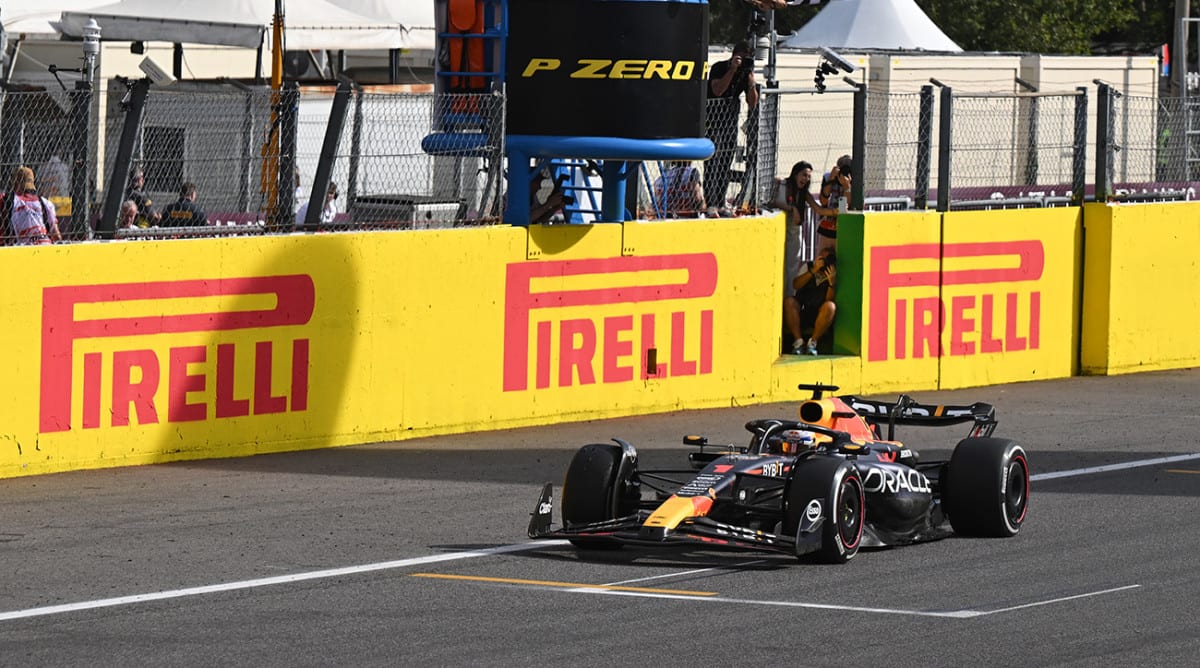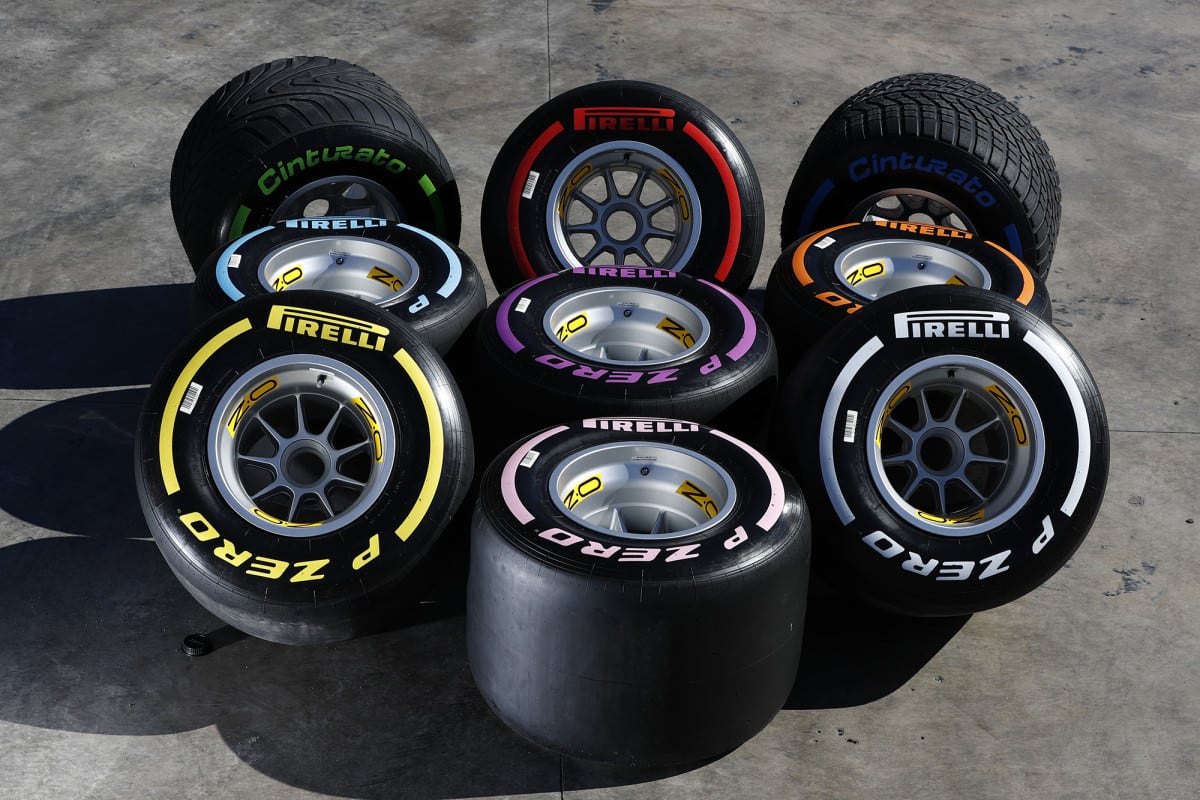In F1, there aren’t many things that are exactly the same for all teams. The drivers are all unique, as are their steering wheels, setup choices, car floors and even the rear wings. In fact, most parts on or in the cars are different from that of rival vehicles.
But there is one constant among all 10 teams on the grid: the tires. Pirelli has been the sole tire supplier to F1 since 2011. Founded more than 150 years ago in Milan, Italy, Pirelli has an essential but often overlooked job in the championship. The company’s motorsport efforts are headed up by charismatic Italian Mario Isola, who sat down to discuss his role, the importance of the tires in F1, sustainability among manufacturers and more.

Courtesy of Pirelli
Sports Illustrated: Lots of people might think a tire is just a tire. However, Pirelli is constantly trying to upgrade the tires in F1 to make them the best they can be. What does that process look like?
Mario Isola: First of all, we have to guarantee safety. That’s why we have to update our product every year. Obviously during the year, we are obliged to freeze the product or to change the product during the season. But every year we update the product because teams are developing the car. Every year you have more load on the tires and more speed, and the stress that you put on the tires is much higher than the year before. That means that we have to follow this direction, and we have to provide tires that are safe.
The second point is about the performances that are required to the tires. When we came to F1 in 2011, it was a bit difficult with everybody asking for something different. But now we have a target letter—it’s a document where we have listed delta lap time between compounds, the level of degradation, with the target to have different strategies to give the teams the possibility to design their own strategy.
SI: What’s one thing you think people won’t know about Pirelli?
MI: The level of complexity behind designing tires. A lot of time I listen to people talking about the tires, and that it’s easy to compare current cars with cars from 20 years ago. The way it was 200 kilogram less, or a lot more stress on the tires, a different aero package, different characteristics, but it's not correct to compare a different period of F1. Requirements from the teams are increasing more and more every year, so they ask for more data or different characteristics of the tires. We have to follow this request, too, because we are part of the show and we want to propose new ideas. From 2011 [when Pirelli entered F1 as a tire supplier] to now, I can find a lot of differences.
SI: Your interest in motorsport started around age 11 or 12. From there you began to kart and enjoyed racing more competitively before finding yourself as a test driver for Pirelli’s road car tires. How did you make that switch?
MI: I don’t have any family background of people that were racing or were motorsport fans. I was the first one. I started by asking my dad to buy me a go-kart because I wanted to compete. Obviously, when you are 11 or 12, you believe you will be a F1 driver in the future, but then you realize that it’s not possible! I started to race with go-karts when I was 13, because at the time it was the minimum age, and then I continued for almost 10 years. I realized that I had to change my approach and, if I wanted to stay connected to motorsport, I had to find another way to be in motorsport. I believe that experience was helpful, especially in my current role, because when I was employed by Pirelli as a test driver, it was thanks to the fact that I had some racing experiences. That’s very helpful to understand when you talk to the drivers, to speak the same language, because sometimes understanding the feedback from a driver is not easy for people not connected to motorsport.
SI: One topic that is popular is bringing back a “tire war” to F1. We saw it in the past with the likes of Bridgestone and Michelin both supplying teams with tires in the early 2000s, which allowed for another strategy option. However, Pirelli is now the only tire supplier on the grid. Was having different tire manufacturers a good or bad thing for the championship?
MI: It’s a different world now. We cannot consider a tire war nowadays because of the cost that it involves. In the past, it was a different situation. Most of the teams were testing tires every day, for probably 100 days per year or something like that. Can you imagine, in a period where we are talking about cost caps in F1, giving all the teams the possibility to achieve a certain level of performance? If you open it up to a different tire manufacturer, that’s one element, but the other element is that when you are in a tire war, clearly the tire is making a big performance. I believe that spectators like to see the driver as the hero of the sport, not the tire supplier. It’s the driver that deserves to be in the center of the show, and, with the sole supplier, the advantage is that everybody has the same product. There is still an advantage if you learn how to use the tires in a better way. There’s still the possibility to get an advantage in learning how to use the tires, but obviously it is a lot different compared to the past, where tire manufacturers were designing tires around the car. Now you have to design the car around the tires, which are slightly different.
SI: Across other championships, we are seeing tire manufacturers use more sustainable materials in their compounds. Is that something we can expect to see from Pirelli’s F1 tires any time soon?
MI: Sustainability for Pirelli has been a priority for many years, before we started with F1. We have a dedicated department for sustainability and we are researching a lot of solutions in any area of our activity for sustainability. So we’re talking about raw materials, transportation, end of life, how we recycle the tires and so on. Any detail is important. We have sustainable or renewable materials in our tires, so we are planning to increase the percentage in the future. We are analyzing the way to recycle the tire in a better way. At the moment we’ll create energy from used tires, but in the future we want to recycle new material from the old tires.

Courtesy of Pirelli
SI: Fans want to see a comeback of the iconic rainbow collection you debuted in 2018, which included seven compounds that were all distinguished by different colors such as pink, ice blue and even orange. Whereas now, we only have red for the softest tire of the weekend, yellow for medium and white for the hardest.
MI: Here you have two different teams: the ones that liked the rainbow and the ones that like the current situation. I liked the rainbow, honestly, but it was a bit complicated for spectators that were watching F1 without any deep technical interest. So sometimes they were seeing pink, purple or red tires and sometimes yellow or white. It was complicated. Especially the year where there were eight or more compounds, I can understand. I believe that with the current system, we reached the target with three colors that are easily linked to hard, medium or soft. They’re always the same. But we also provide information to passionate people about which compounds we selected and why we select these compounds for each event. So I’m not sure that we will see the rainbow again.







